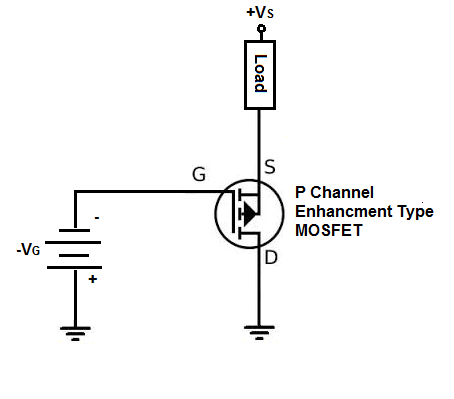Alright, so today I’m gonna walk you through my little adventure with p-type MOSFETs. Buckle up, it’s gonna be a bumpy ride, but hopefully, you’ll learn something from my mistakes and mini-triumphs!

First off, I was messing around with a project that needed a high-side switch. And like a newbie, I thought, “Hey, a MOSFET will do the trick!” But then, BAM! Reality hit. N-channel MOSFETs are usually used for low-side switching, and I needed something on the high side. So, naturally, I started Googling. That’s when I stumbled upon p-type MOSFETs. Seemed simple enough, right?
So, I grabbed a p-type MOSFET from my parts bin – it was some random one I had lying around (IRF9Z24N, if you must know). I breadboarded a simple circuit: battery, resistor, the MOSFET, and an LED as the load. I figured, pull the gate low, and the LED should light up. Easy peasy.
Well, guess what? Nothing happened. Absolutely zip. Nada. The LED just sat there, mocking me with its unlit state. I checked the wiring, the battery, the LED – everything seemed fine. I was scratching my head, wondering what I’d screwed up. I even double-checked the datasheet, which, let’s be honest, I probably should have done before hooking everything up.
Then, the lightbulb moment! (Not the LED, sadly.) I realized that p-type MOSFETs are ON when the gate voltage is lower than the source voltage by a certain threshold (Vgs(th)). My initial circuit had the gate floating, so it was probably close to the source voltage. No voltage difference, no conduction!
Okay, time for a new approach. I added a pull-up resistor to the gate. This would keep the gate high (close to the source voltage, which was the battery voltage) by default, keeping the MOSFET OFF. Then, I added a button to pull the gate low when pressed. Simple, right?

Pressed the button… and… LIGHT! The LED finally lit up! Victory! But the celebration was short-lived. When I released the button, the LED didn’t turn off completely. It was dim, but still on. Annoying!
Back to the drawing board. I started suspecting the pull-up resistor value. Maybe it was too low, and not pulling the gate high enough. I swapped it out for a higher value resistor (from 1k to 10k), and BAM! Perfect. The LED turned off completely when the button was released.
So, what did I learn?
- P-type MOSFETs need the gate voltage to be lower than the source voltage to turn ON.
- Floating gates are bad news. Always use a pull-up or pull-down resistor to define the gate voltage when it’s not being actively driven.
- The value of the pull-up/down resistor matters. Too low, and you might not get a clean switch.
Final Thoughts
It was a pretty basic experiment, but it was a good reminder that even simple components can be tricky. And datasheets are your friend! Don’t be like me and read them after you’ve already messed things up. Happy tinkering!

